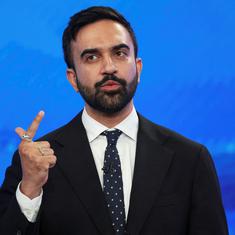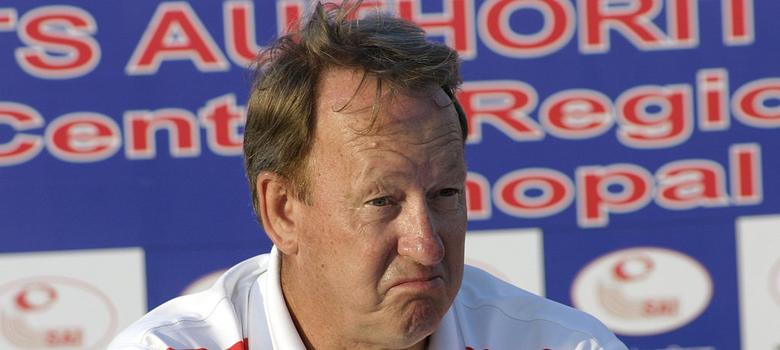Walsh, who represented Australia at two Olympics, coached India to a gold medal win in the recent Asian Games. But he tendered his resignation within a fortnight, citing his inability to cope with the "system". There couldn’t have been a ruder wake-up call.
Walsh, remember, was a prize catch after a plethora of coaches who had come and gone. Importantly, he had been instrumental to sparking off a revival of sorts after the last place finish in the 2012 London Olympics.
Nothing but a gold medal at Incheong could have got India direct entry into the 2016 Rio Olympics. Going through the qualifiers was not only risk-laden, but also demeaning for a country that still wants to brag about its hockey exploits of half a century ago.
Sweet victory
In the context, India’s triumph was special. Even if the competition at the Asian Games was not as severe as at the Olympics, Walsh’s task was all uphill. Having reached the top, however, his mood and motivation came hurtling downhill in double quick time.
Thankfully, the sports ministry stepped in with alacrity to do some crisis management and Walsh has agreed to reconsider his resignation. It is a moot point, of course, whether this means the "system" will change.
But what is this "system" that so riled Walsh and in the past has claimed so many coaches as victims, both Indian and from overseas?
An exact definition would be impossible, but if you scrutinise Walsh’s complaint, some telling attributes emerge. He has spoken about excessive bureaucracy in the sports ministry, consistent meddling by the hockey administration in matters of coaching and team selection, the incessant three-way conflict between Hockey India, the Indian Olympic Association and the sports ministry, the disregard of players, coaches and support staff.
If one has to reduce this to fundamentals, I read it as nepotism, maladministration, absence of vision and a preponderance of power-play: this is substantially what Aslam Sher Khan had written about in his caustic autobiography. What this means is that the more things have changed in India hockey, the more they’ve remained the same.
At a more personal level, Walsh has also expressed unhappiness over tax cuts in his pay and the meagre leave that he is entitled to.
Archaic administration practices
Obviously the mandarins who run hockey – and by extension sports – in the country are bereft not only of enlightened administration but also of understanding modern human resource management practices.
Clubbing all things together, it would appear that Indian hockey is at a dead-end. Ironically, despite the seemingly bleak scenario, I believe hockey can still have a bright future.
This is based on two counts. One, hockey needs India today. Badly. Two, India is poised to make a breakthrough as a sporting nation that can help hockey as indeed sports other than cricket.
That there has been a global diminishment in the appeal of hockey is a fact. The causes of this are several ranging from rules that befuddle the viewer and perhaps, more importantly, poor branding/marketing/positioning.
The global parent body FIH has been seized of the challenges, though it has been slow in squaring up to these. For instance, the match has only just been reduced from two halves into four quarters – which is badly needed to suit television viewing and sponsorship needs.
That said, how to retain old fans and gain new converts is still pretty much trial and error. One thrust area, however, is to woo Indian fans. That is is why the FIH started Project India in 2011: ostensibly to help the country’s warring hockey factions reach a rapprochement, but essentially to help itself.
This project has been muted in recent times, but whether openly stated or not the FIH is still dependent on India to produce the spectators and eyeballs that can resuscitate the sport globally.
This attempt has acquired greater merit in the past decade or so. An economy that has shown better growth than most in the world, a massive youth population and a new-found zest for sport that has seen the spawning of cash-rich leagues in football, kabbadi and badminton apart from cricket suggests that hockey could make a strong comeback.
Conditions attached
But there are conditions attached. For instance, privatised hockey leagues have been around in India for six or seven years but they have not proved as successful as some of the others, which tells us that spectators, sponsors and also broadcasters are discerning.
That hockey is India’s national sport is not enough to bring in fans and money. In a sense, that is emotional blackmail who’s utility has now lapsed. In the absence of excellence – in administration and performance – the fans are ruthless enough to move on to something else.
If a revival in hockey has to happen, it has to be impelled by the "system" rather than from outside. There is a way, but there has to be a show of will, failing which the title of Aslam Sher Khan’s book of four decades ago could become a truism again.
This time not by fans disillusioned enough to say, "To Hell With Hockey".










